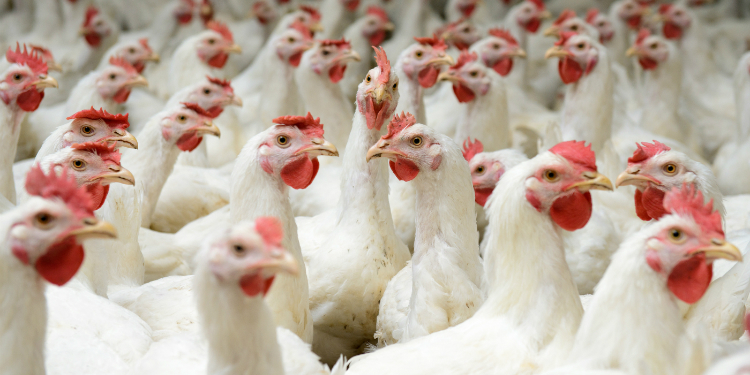
Summer is within reach and it is common to face massive death cases in industrial aviculture. Due to the intense heat waves in this time of year and the lack of proper farm infrastructure, the animal’s health is easily compromised and generates a great number of problems to the quality of the meat. Learn the major precautions with poultry in times of high temperatures.
Did you know that poultry is sensible to heat and humidity variations? The calorifc stress decreases ration feeding and makes that the birds lose a good portion of energy that should be used to weight gain for dispelling the internal heat excess.
Differently to humans, poultry can’t lose heat through sweat. They need to cool their internal organs through evaporation or drinking water. That is the reason why the famous hypothermia inside farms might occur, by lack of optimal temperature. Now, let’s go into some steps to create an ideal environment for the poultry in your farm.
To ventilate the facilities, cooling equipment such as fans, exhausters, nebulizers and plate evaporators must be used to ensure a good poultry performance, aiming the maximum weight gain and decrease of feed conversion.
Usually, the fans are controlled by timers, defining when they are activated and may also be regulated by fan velocity. They are utilized for withdrawing toxic gases and humidity. This kind of system demands that the aviary is well-sealed and, if there is any air leakage, the system will be less effective or even flawed.
Managing entrance of heat in the aviary and facilitating exit of produced heat, ventilation is a complement of the comfort requirements from farm workers. But be advised: in the fan case, it’s mandatory that they are positioned correctly, as well as the exact amount to each aviary, to avoid direct wind incidence in birds and low performance in the batch, due to stress. Using structural instruments to keep the thermal balance between poultry and environment helps to eliminate the humidity excess in the facilities and in the bed, which comes from the water in birds’ respiration and rejects.
Another important aspect to poultry care is in the drinkers’ water. The water temperature influences the poultry consumption and productivity. The quantity of ingested water from the birds raises with the elevation of the temperature and the consumption limits the growth and survival rate, when in situations of thermal stress. Its exchange must be routine (at least six times a day in the first days of accomodation), avoiding that the water gets warm and causes diarrhea in the poultry.
As the animal looks for thermal balance through drinking water, in case of being out of its comfortable temperature, the consumption will be greater and the respiratory rate raises, which leads to physical exhaustion, weight loss and, consequently, animal mortality.
Organisms of birds could be considered as a complex cell society, that are associated and interrelated to the environment where they live. With more and better zootechnical results in aviaries, the poultry’s quality of life will be greater. After all, the systems’ activities effect is to create, inside the organism, the proper environment for all cells to work adequately, ensuring a good performance. Therefore, the final product delivery will reflect the well-being of the animal during its life.